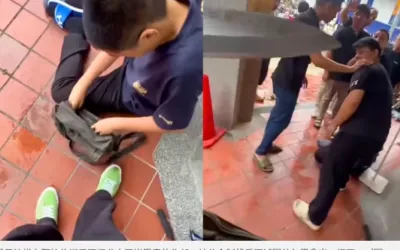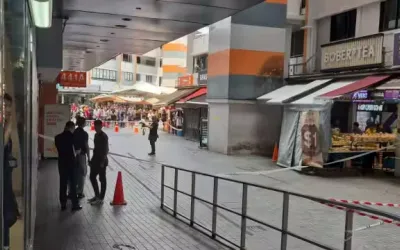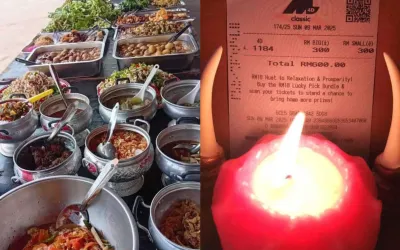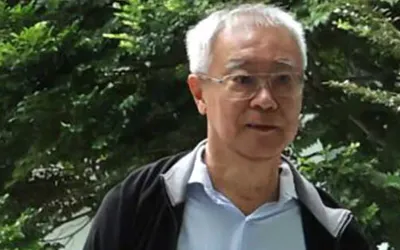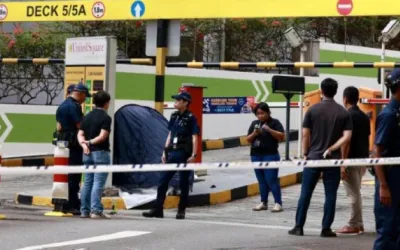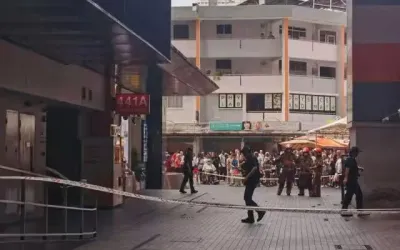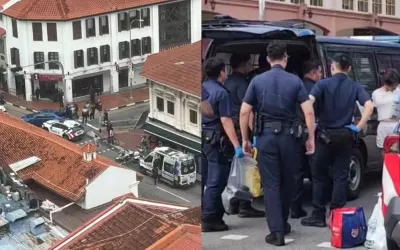2024年9月9日,新加坡永續發展與環境部高級政務部長許寶琨醫生在國會答覆楊厝港單選區議員葉漢榮有關小販攤位租金上漲對食品可負擔性的影響問題。
以下內容為新加坡眼根據國會英文資料翻譯整理:
16 葉漢榮((楊厝港單選區議員))先生就最近小販攤位租金創紀錄超過每月 10,000 新元一事詢問永續發展與環境部長:
(a) 這是否意味著小販攤位租金上漲的趨勢?
(b) 這種趨勢對新加坡人的食物可負擔性和可獲得性有何影響?
許寶琨醫生(永續發展與環境部高級政務部長,代表部長):議長先生,國家環境局 (NEA) 通過每月的招標活動出租小販攤位,招標活動透明且公平。投標人根據各種商業考慮因素提交標書,例如客戶資料、地點的人流、預期客流量和營業時間。國家環境局不會為這些招標設定任何底價租金或最低投標價格。因此,如果有人認為這個地方的特色不值得這麼高的價格,他們也沒有壓力出價更高。
最近,馬林百列中心小販中心熟食檔的招標吸引了40多份標書。投標競爭相當激烈,前五名的出價都在 8,000 新元以上。總體而言,這是一個非常受歡迎的中心,因為它全天營業三餐,人流量很大,特別是考慮到最近新地鐵站的啟用以及該中心附近的其他開發項目。
雖然有幾個熱門地點的攤位吸引了高價競標,但我必須解釋一下,如此高的投標價格並常見。2023 年,小販中心熟食檔位的中標價中位數約為 1,800 新元。在2023年,約五分之一的熟食檔位的中標價在500新元或以下。
根據國家環境局的調查,平均而言,2022年租金占攤主運營成本的不足10%,而原材料和人力分別占其運營成本的56%和20%。儘管如此,國家環境局還是採取了各種措施來緩和小販攤位的租金。除了不為投標設定底價租金和不允許轉租外,投標租金也會在第一個三年租期後調整為通過獨立專業評估確定的評估市值租金。由於採取了各種措施,我國小販中心非補貼熟食攤位的月租金中位數約為1,250新元,自2015年以來一直維持在這個水平。國家環境局將繼續密切監測小販攤位租金情況。
議長:有請葉漢榮先生。
葉漢榮先生(楊厝港單選區議員):謝謝議長先生。謝謝高級政務部長的答覆。雖然重點是消費者的食品負擔能力,但該部如何評估提高小販攤位租金對小企業主和有志於進入小販行業的新手的影響?在租金上漲的情況下,為這些群體提供了哪些的支持?
許寶琨醫生(永續發展與環境部高級政務部長,代表部長):議長先生,謝謝這位議員的提問。就攤位租金壓力而言,國家環境局確實為小販提供了有利的環境,包括確保小販中心的租金保持在合理和負擔得起的水平。因此,舉例來說,國家環境局已採取一系列措施,確保小販中心的租金公平和非投機性。正如我在之前的回覆中提到的,這包括禁止轉租或轉讓小販攤檔,以防止攤主作出尋租行為。因此,他們基本上只是將更高的租金轉嫁給下一個想從他們那裡轉租的人——而這是我們不允許的。
此外,正如我所提到的,國家環境局的措施包括採用透明和公平的月度招標。因此,自2012年3月以來,在空置店鋪招標中取消了底價租金,以使攤位租金能夠根據人們的投標情況充分反映市場行情。
雖然沒有最低投標價限制,但有些人可能會出價較高,以爭取到較受歡迎地點的攤位。此外,我還想提一下,目前只有約4%的小販中心熟食店所支付的租金高於評估市值租金。對於其餘 6,000 多名攤主,他們支付的租金不高於評估的市值租金。
事實上,對於一些新的小販中心,在「具有社會意識的企業小販中心管理模式」下,國家環境局將全面考慮投標建議,包括小販將承擔的總成本,然後才將標書授予經營者。此後,中標者必須在整個租期內保持向攤主收取的相同費率。因此,對許多攤位經營者來說,成本確定性更高。
自2019年9月起,新小販中心的經營者還須分期支付頭兩年的攤位租金,分別為80%和90%,第三年攤主才支付全部租金。這樣做的目的是幫助攤主在小販中心開業的頭兩年逐步建立客源,以管理運營成本。
至於那些在第一個租期內出價很高的檔主,例如出價10,000新元或8,000新元的攤主,這一價格將維持不變。但在第一個租期結束後,這一價格將調整為市場評估租金,約為1,800新元至1,500新元左右。因此,從長遠來看,這將有助於小販在下一個租期內更持久地維持這一價格。[請參閱 「永續發展與環境部高級政務部長的澄清」,官方報告,2024年9月9 日,第 95 卷,第 140期,書面聲明更正部分。]

以下是英文質詢內容:
Mr Yip Hon Weng asked the Minister for Sustainability and the Environment regarding the recent record-breaking hawker stall rent exceeding $10,000 per month (a) whether this signifies a trend of escalating hawker stall rentals; and (b) what impact will such a trend have on food affordability and accessibility for Singaporeans.
The Senior Minister of State for Sustainability and the Environment (Dr Koh Poh Koon) (for the Minister for Sustainability and the Environment): Sir, the National Environment Agency (NEA) lets out hawker stalls through monthly tender exercises, which are transparent and fair. Tenderers submit bids based on various business considerations, such as client profiles, the footfall of the location, expected patronage, and operating hours. NEA does not set any reserve rent or minimum bid price for these tenders. So, there is no pressure for people to bid higher if they feel that the characteristic of the place does not warrant such high price.
The recent tender for the cooked food stall at Marine Parade Central Hawker Centre attracted over 40 bids. The bids were quite competitive, with the top five bids above $8,000. Overall, this is a very popular centre as it is open for three meals throughout the day and has good footfall, especially given the recent opening of a new MRT station and additional developments that are near this centre.
While a few stalls at popular locations have attracted high bids, I must explain that such high tender prices are not the norm. The median successful tender price for cooked food stalls across hawker centres was about $1,800 in 2023. About one in five cooked food stalls were also awarded at tender prices at or below $500 in 2023.
Based on NEA’s survey, on average, rental forms less than 10% of operating costs for stallholders, compared to raw materials and manpower which accounted for 56% and 20% of their operating costs respectively in 2022. Nonetheless, NEA has various measures in place to moderate hawker stall rents. Besides not setting a reserve rent for tenders and disallowing subletting, tendered rents are also adjusted after the first tenancy term of three years towards an assessed market rent determined through independent professional valuation. As a result of the various measures, the median monthly rent of a non-subsidised cooked food stall across our hawker centres is about $1,250 and it has remained at this level since 2015. NEA will continue to monitor hawker stall rentals closely.
Mr Speaker: Mr Yip.
Mr Yip Hon Weng (Yio Chu Kang): Thank you, Mr Speaker. I thank the Senior Minister of State for his reply. While the focus has been on food affordability for consumers, how does the Ministry assess the impact of increasing hawker stall rentals on small business owners and aspiring new entrants into the hawker trade? And what are the kind of support that are given to these groups amidst these rental increases?
Dr Koh Poh Koon: Sir, I thank the Member for his question. As far as the stall rental pressures are concerned, NEA does provide hawkers with a conducive environment, including ensuring that rentals are kept reasonable and affordable at hawker centres. So, for example, NEA has put in place a series of measures to ensure that the rentals in our hawker centres are fair and not speculative. As I mentioned in my reply earlier, this includes disallowing subletting or assignment of hawker stores to prevent stallholders from engaging in rent-seeking behaviour. So, they basically just pass on the higher rent to the next guy who wants to sublet from them –and that is something that we disallow.
Also, NEA measures include adopting a transparent and fair monthly tender exercise, as I mentioned. Since March 2012, the reserve rent has therefore been removed in the tender of vacant stores to allow stall rentals to reflect fully the market conditions based on what people tendered.
While there are no minimum bid price restrictions, some may submit higher bids in order to secure the stalls at more popular locations. And let me just also mention that only about 4% of cooked food stores in hawker centres today are paying rent at above the assessed market rent. For the remaining over 6,000 stallholders, they are paying rent no higher than assessed market rent.
In fact, for some of our new hawker centres, under the Socially Conscious Enterprise Hawker Centre management model, NEA will take into consideration tender proposals holistically, including the total cost that hawkers will bear before we award the tender to the operator. And thereafter, the successful tenderer is required to maintain the same rates for charges collected from stallholders throughout the tenancy term. So, there is more cost certainty to many of the stall operators.
Since September 2019, operators of new hawker centres are also required to stagger their stall rentals for the first two years of the centre’s operations at 80% and 90% respectively, before stallholders pay the full rental costs in the third year. So, this is to help stallholders manage their operating costs as they gradually establish a clientele in that hawker centre over the first two years of their operation.

